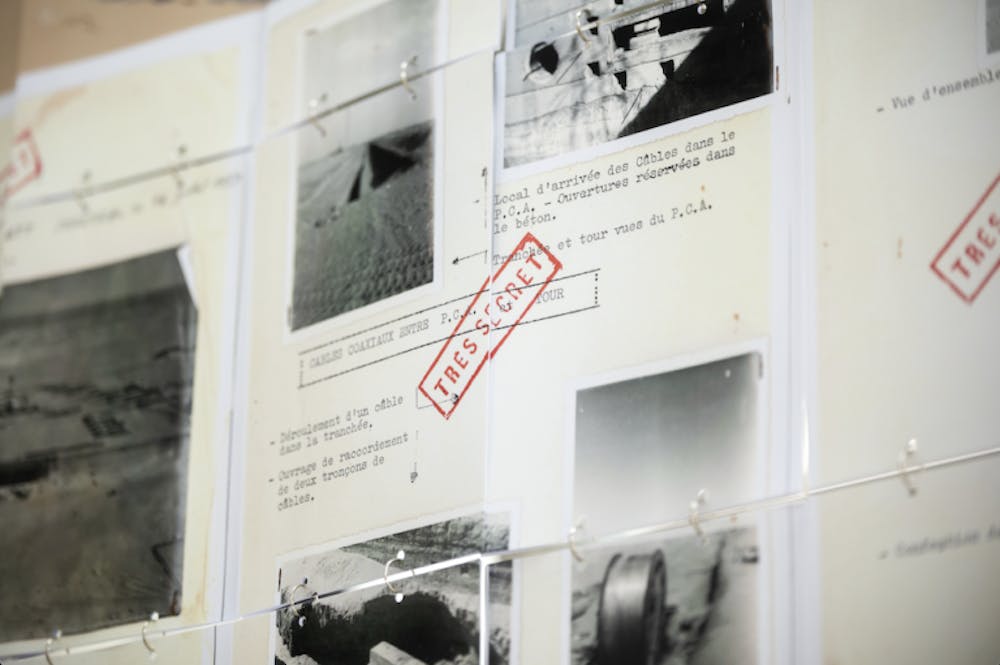The exhibit “Performing Colonial Toxicity” by writer, artist and historian Samia Henni kicked off the three-day Elemental Media Conference at Brown on Wednesday.
The exhibition, held in the Department of Modern Culture and Media’s Carriage House, revealed the impact of French nuclear testing on the Algerian Sahara desert. Henni used multiple free-standing displays of A4 sheets of paper that piece together larger maps, images, captions and interviews.
The decision to utilize a simple medium was intentional by Henni, whose exhibit first opened in Amsterdam before it traveled to Zurich and London.
“The idea was really to try to think of a way to assemble documents and disassemble them,” she said in a speech at the event. “This was so we can pack them and send them around the world. It had to be very low-tech and basic.”
Her desire to bring the exhibit around the world is rooted in the secrecy surrounding this nuclear testing. Between 1960 and 1966, the French colonial government detonated four atomic bombs and thirteen underground nuclear bombs in the Algerian Sahara, even after Algeria gained its independence in 1962.
“Performing Colonial Toxicity” displays newspaper clippings, leaked documents and interviews with historians to piece together the effects of French colonialism and its lasting impact.
According to Henni, the exhibition is organized to purposefully overwhelm visitors. Visitors are first welcomed by the faces of the Algerian Sahara people — many of whom can recall the impact of nuclear testing on their communities.
Despite having to condense the exhibit to fit the small space available at Brown, organizers Amelle Zeroug GS and Adel Ben Bella GS took advantage of the room to create an experience that would appeal to all visitors.
“She doesn’t go with a linear narrative, but rather, you’re supposed to be drawn to what’s interesting to you, and piece together — using all the different source work that she’s collected — what happened,” Zeroug said.
As part of the Elemental Media Conference, “Performing Colonial Toxicity” uses various forms of media to recognize the intersection of climate and politics.
“MCM has practice and theory, so we really want to challenge that binary,” said Sherena Razek GS. “We wanted to bring together the intellectual and the artistic, and so this was a perfect opportunity to bring an intellectual artist working on the elemental to Brown.”
“It’s what art really should be,” said Anne Mesiarik ’28, an attendee at the exhibition. “It’s great bringing this sort of piece of history to life through art. It’s given me a broader idea of what colonialism is and how it can manifest in different ways that we don’t normally think of.”
Henni hopes visitors will be inspired to return and learn more about a part of Algerian history that she says has been purposefully sealed away.
“Very often, colonialism is not studied together with pollution, with toxicity, with radioactivity, with anthropocene, with human metamorphoses of the land,” she said. “It is really crucial to make these intersections and bring this to schools (and) to universities, not only to museums.”





